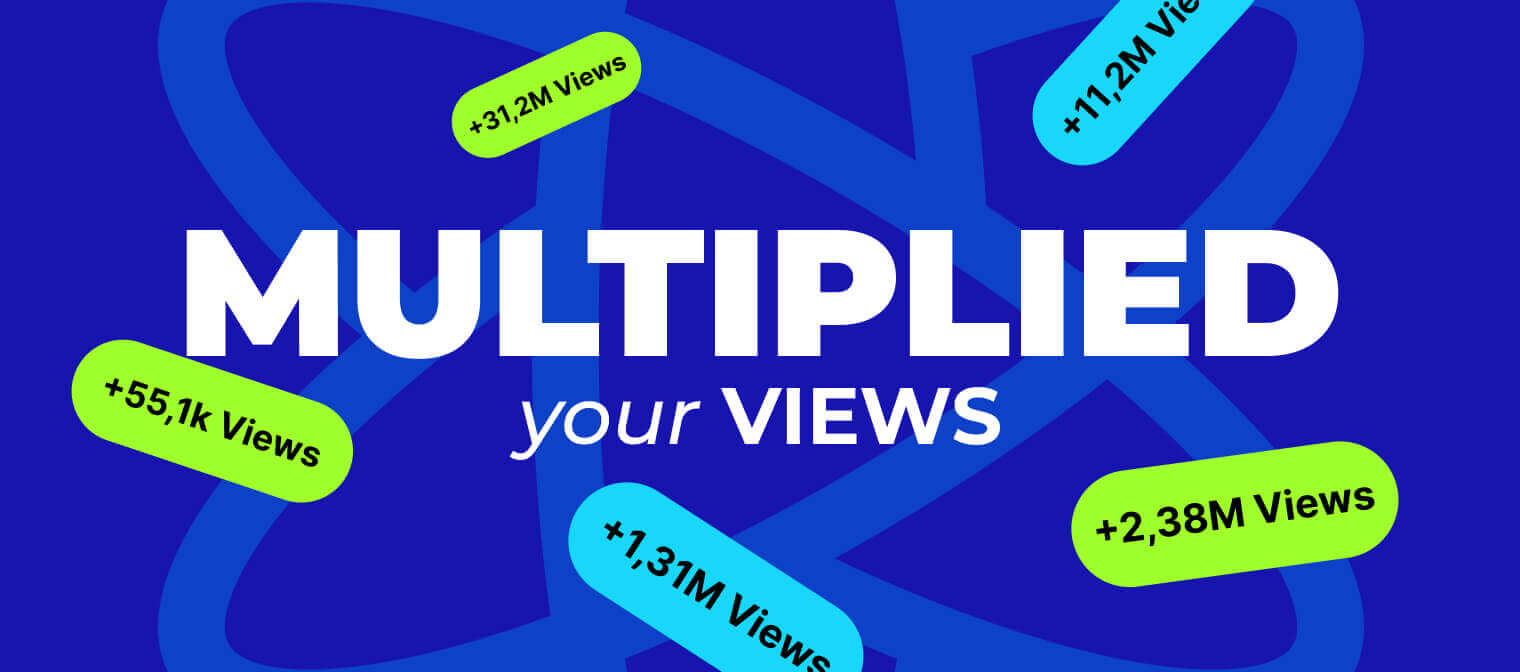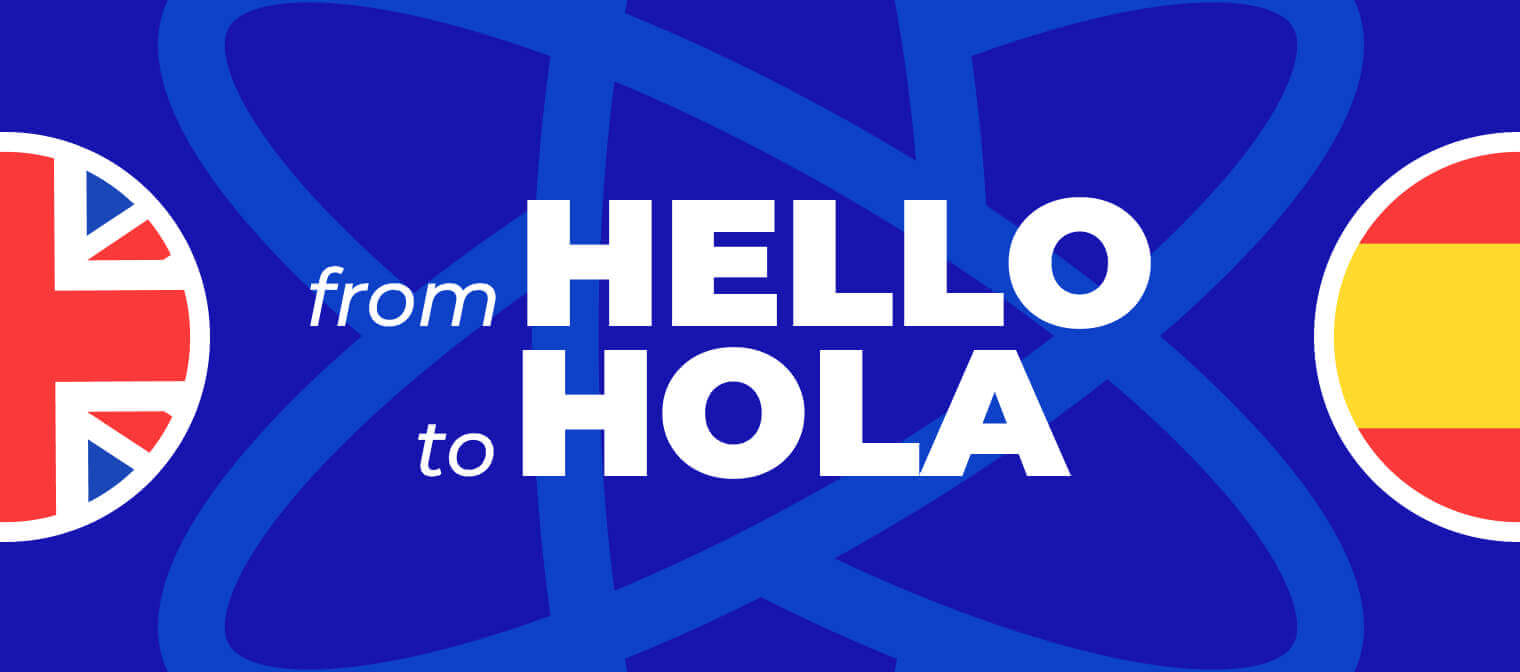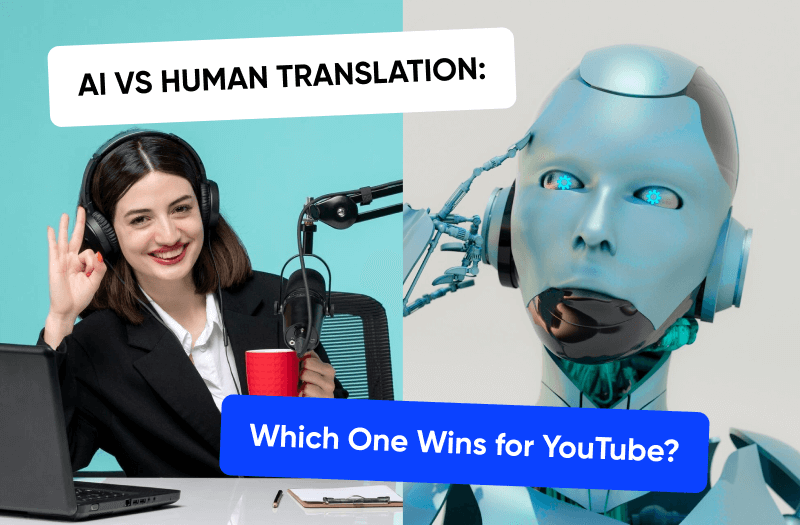Translating your English content into Spanish is one of the simplest ways to get more views, more watch time, and more revenue without making new content.
We’ve helped hundreds of creators do this through subtitles, dubbing, and multi-language audio. The results are clear: more visibility, more engagement, and more opportunities.
Here’s how it works and when it makes sense.
New Opportunities With The Spanish Market
The global YouTube audience speaks many languages, and Spanish is the second largest native-language group. Over 480 million people speak Spanish natively. But only 15% of YouTube content is in Spanish. That gap is an opening.
YouTube's algorithm doesn’t care which language you speak. It cares about engagement and retention. If there's a massive foreign language audience with less content to watch in their language, the potential is clear. Less competition. Bigger pie. It’s an opportunity to reach the Spanish audience without reinventing your content.
We've seen creators double their watch time and subscriber growth simply by offering Spanish subtitles on YouTube or launching a localized Spanish channel. The content stays the same. The language changes. That’s the power of Spanish video localization.
These Creators Localized to Spanish
Take Jason Vlogs. Main English channel with 24.8M subscribers. The Spanish version has 7M. And Hindi version with 9M. One of his biggest growth levers was multilingual content.
Or Vania Mania Kids. After localizing with Spanish dubs, they gained 13M monthly views from Latin America. Other markets followed: Germany, Poland, etc. Spanish was consistently a top performer.
Then there’s Brave Wilderness. A fully dubbed Spanish version, with localized content, pulled 27M new views in 6 months.
These are creators who saw the ceiling in English and took the next step with YouTube's global reach.

Does Your Content Fit the Spanish-Speaking Market?
Many underestimate how well their format could perform in Spanish. Here’s what we’ve seen across hundreds of channels we’ve helped:
Works Extremely Well
- Kids content. Animated stories, family vlogs, and playful skits thrive because emotion and visuals do most of the work. Channels like Vania Mania Kids and SOFIA PLAY saw millions of extra monthly views from Spanish dubs alone.
- Entertainment and lifestyle. Challenges, reactions, pranks, and daily vlogs have universal appeal and need minimal adaptation. Latin American audiences especially love personality-driven content.
- Gaming. Gameplay transcends language barriers. Spanish-speaking audiences make up one of the most active gaming communities on YouTube, especially in Mexico, Argentina, and Spain.
- Education and tutorials. Explainers, science, and “how-to” videos perform extremely well. There’s high demand in Spanish for practical topics like tech, DIY, and learning English.
- Music and dance. Latin music culture dominates global YouTube charts. Even non-Spanish creators can tap into this by translating or subtitling performance content and collaborations.
- Food, travel, and culture. Spanish audiences love seeing other cultures, especially when creators add localized subtitles or dubbed voiceovers that make the story feel native.
- Motivational and self-improvement content. These niches have strong, engaged followings in Spanish-speaking regions, and creators often see sharp retention growth after localization.
Needs Extra Adaptation:
- Comedy and commentary. Humor, slang, and sarcasm often lose impact in translation. These work best with culturally adapted scripts and native Spanish voice actors.
- Highly regional topics. U.S. or UK-specific themes (politics, local news, niche cultural references) tend to resonate less unless reframed or contextualized.
If your content could make sense to someone in Mexico, Spain, or Argentina without a deep cultural context, you’re a great fit for Spanish localization.
And if your content already performs well internationally in English, localization is often the easiest growth multiplier you’ll ever implement.
One of our kids' channel partners dubbed 20 top-performing videos using Latin American Spanish voice actors. In four months, they pulled over 13 million new monthly views.
Another partner added Spanish subtitles to their how-to content. Within weeks, suggested traffic from Latin America overtook their English core audience.
These aren’t one-offs. These are replicable patterns when you approach your international content plan with the right steps.

Which Version of Spanish Should You Use?
Unless you’re targeting Spain directly, use Latin American Spanish. The viewership and market are significantly larger:
- Mexico: 126M people
- Colombia: 52M
- Argentina: 45M
- Peru: 34M
- Venezuela: 28M
Compare that to Spain’s 47M. Latin America delivers scale.
Plus, over 42M people speak Spanish at home in the U.S. Most of them are from Latin America. Latin American Spanish is also widely accepted across the region. It’s the right default for growing a foreign language audience.
Still unsure? Check your YouTube Analytics > Audience > Top Geographies. If Mexico, Colombia, Argentina, or the U.S. rank high, your decision is made.
CPM Myths: Why Volume Beats Rate
Yes, CPMs in Latin America are lower. Spain leads with ~$2.8, while Mexico and Colombia float under $1.
But CPM is only part of the story. It’s about total monetizable volume. Spanish-speaking countries over-deliver on watch time. Your content can earn more overall just by reaching more people.
Think in terms of reach and retention. With good localization, both increase. And if you add monetization features like Super Thanks, memberships, and sponsored integrations, you're not depending on CPM alone.
A creator we work with added Spanish audio to their kids' channel. They didn’t see a drop in English earnings. Instead, they picked up an x1.5 extra income from Spanish views. That’s how you translate for more views and revenue.
Subtitles, Dubbing, or Both?
The question is how deep to go. For creators testing the Spanish-speaking market, this decision defines both your audience retention and your algorithmic reach.
Subtitles: The Safe Start
Subtitles are the fastest entry point to the Spanish-speaking market. You keep your original voice, tone, and rhythm and unlock discoverability in an entirely new language. With metadata and captions in Spanish, your videos start surfacing in search and “suggested” feeds across Mexico, Colombia, and Spain.
But subtitles attract viewers, not keep them. On mobile (where more than 50% of Latin American watch time happens), reading is friction. Especially in kids’, entertainment, or gaming content. The viewer drops off, even if they clicked in the first place.
Subtitles are excellent for testing markets. They tell you where interest exists. But if your Spanish-speaking audience stops watching at the halfway mark, it’s not your topic, it’s the format.
Dubbing: Where Retention Lives
Dubbing is what turns translation into immersion. When the voice matches the viewer’s language and culture, average view duration jumps, and the algorithm follows. That’s why channels like Vania Mania Kids and Jason Vlogs scaled millions of extra monthly views in Spanish alone, because their localized voices sounded native, not dubbed.
Still, the dubbing question today isn’t “do it or not.” It’s how.
Many creators turn to AI for speed. But our data shows what YouTube itself doesn’t publish: AI dubbing still breaks watch time.
In our experiments across kids and entertainment channels, AI-only dubs dropped average view duration by 4-5×, from 5-7 minutes to under 1. The voices were technically clear, but emotionless. Flat pacing, wrong idioms, mismatched tone. Viewers felt it instantly, and the algorithm did too.
Both: Discovery Meets Depth
The most successful creators use both. Subtitles widen reach; dubbing deepens it. YouTube’s multi-language audio now lets you host several language tracks on one video, preserving all engagement signals in a single URL. That’s huge. The algorithm treats every viewer (English, Spanish, Hindi) as part of one watch-time ecosystem.
So, the playbook is simple:
→ Test your top videos with Spanish subtitles.
→ Track the traffic.
→ Then dub the winners with human voices.
You’ll turn translated curiosity into real retention, and from there, into revenue.
Want help?
Contact us today. We’ll handle everything for you: subtitles, translation, localization, dubbing, and launch, so your content reaches Spanish-speaking viewers faster.
Some AI Tools Can Do The Job
YouTube now supports multilingual videos. That means you can publish one video and offer audio in multiple languages. There are also tools that make Spanish video localization easier:
- AI subtitles and translations.
- Human dubbing with native voice actors.
- Translation services that specialize in content localization for creators (like we do).
Start with metadata. Translate your titles, tags, and descriptions. Then test full subtitles. From there, dub your top 5 performing videos. That’s your pilot program.
But the deeper the localization, the better the results. Dubbing with real voices. Accurate subtitles. Separate language channels. These efforts pay off faster than metadata alone.
Don't Launch a New Channel Without Testing
You don’t need to create a second channel immediately. Test translations on existing content first.
Add Spanish subtitles to three of your top-performing videos. Monitor the metrics: retention, new countries, and traffic sources.
Translate YouTube videos or dub one of your strongest storytelling pieces with a professional voice actor. Track whether the average view duration changes.
If the signal is strong, go bigger. Build a multilingual YouTube channel, or launch a Spanish version entirely. But let data guide you. And always use native speakers or professionally localized tools.
Let’s Do It for You Too
ScaleLab has helped creators add millions of views through Spanish localization. Some doubled their traffic. Others tapped into new revenue streams. Many broke through long-standing growth barriers.
We don’t stop at translations. We pick the right Spanish dialect, match you with professional voice talent, localize your metadata, and build a rollout plan for maximum impact. Whether you want Spanish subtitles on YouTube, full dubbing, or a multilingual YouTube channel strategy, we handle it.
Want to see how far your channel can go in Spanish? Get in touch with us today.
Let’s translate for more views. Let’s unlock your YouTube global reach.



